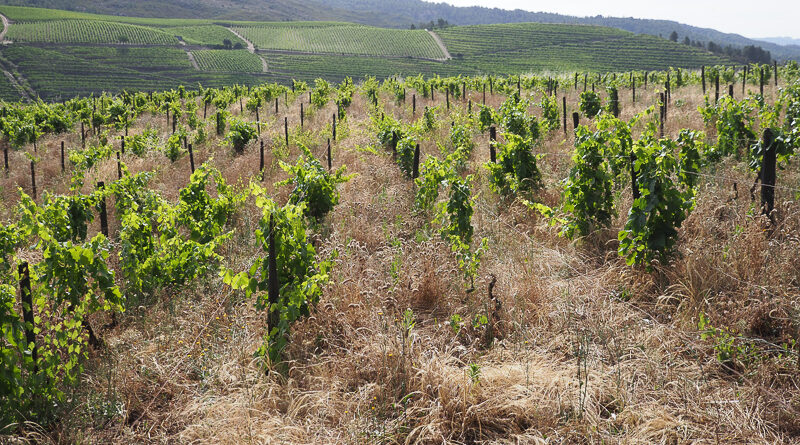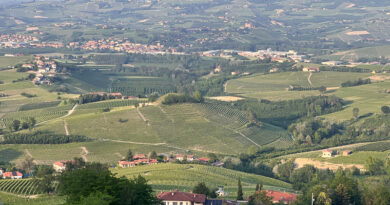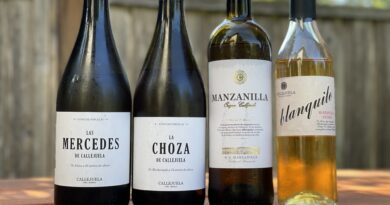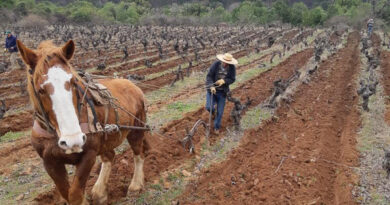Visiting Folias de Baco, a Douro winery making compelling natural wines under the Uivo brand
Website: https://www.foliasdebaco.com/
Tiago Sampaio is making some of the Douro’s most interesting natural wines under the Uivo brand. His winery is actually called Folias de Baco, which translates as ‘follies of Bacchus.’ Vineyards are at altitude (500-700 m) near Alijo in the high flatlands of the Cima Corgo, known as the planalto.
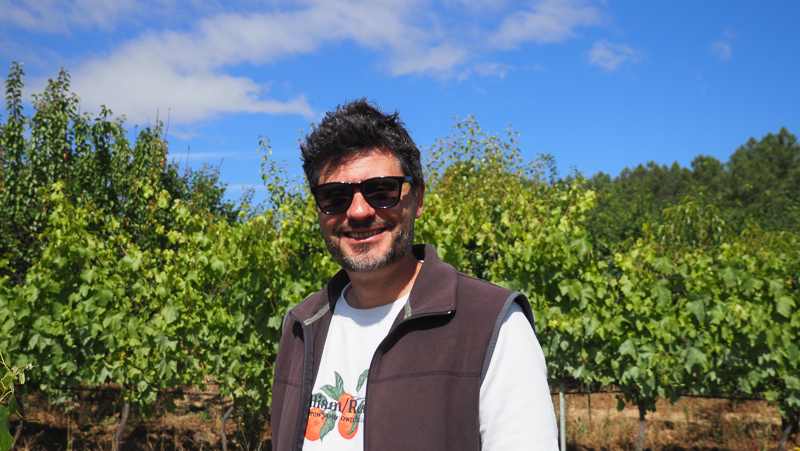
His background is interesting. ‘Ever since I was a kid, I always liked agriculture in general, and winemaking,’ says Tiago. ‘Although I grew up in Porto, I oriented my life towards this. When I was 13 I decided to study in agricultural school instead of regular high school. And then I went to Vila Real to study agricultural engineering. When I finished that degree there was an opportunity to do an internship in Oregon. One of my professors here went to Oregon for a conference and she met another professor who said they took interns for the summer, and they’d never had a Portuguese one, so it went from there.’
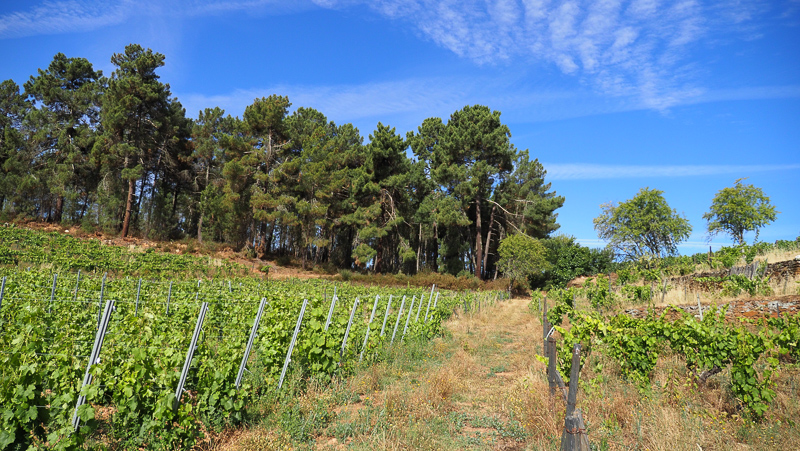
He continues: ’I went. I was supposed to stay six months and I ended up staying nine months. Then they invited me to go back and do a PhD. The first time I went was 2001, and I returned in 2003.’
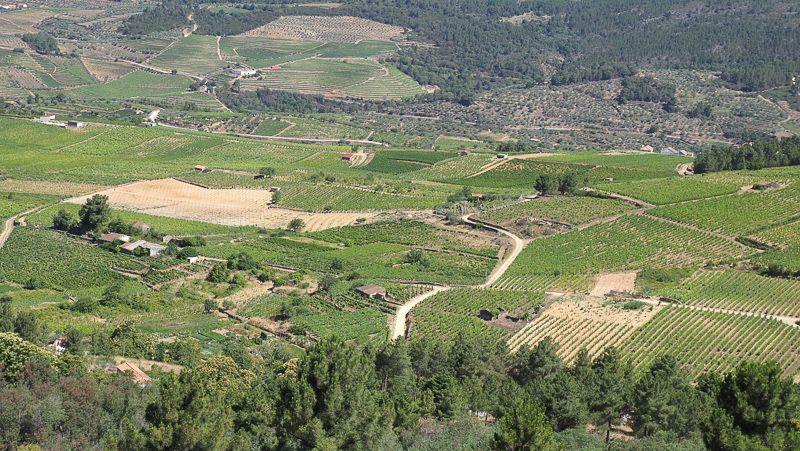
Tiago studied the impact of different rootstocks. ‘We had a collection of 19 rootstocks. We studied all the way from the physiology of the plant until wine. Oregon didn’t have phylloxera. Then the industry demanded to get some feedback about rootstock. What people did when they first started using rootstocks in Oregon was to go to Burgundy and copy what they had, but the climate in Oregon is cool, but it is very different from Burgundy, especially the dry summers. It was a big project: we worked with four different varieties – Pinot Noir, Pinot Gris, Chardonnay and Merlot.’
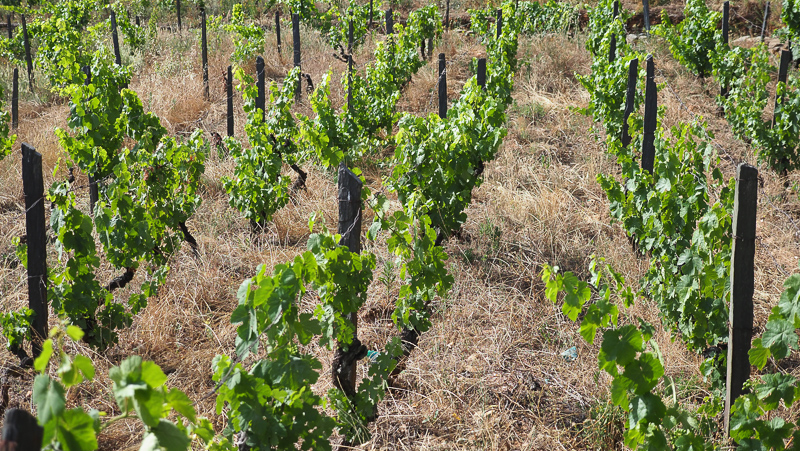
‘When I came back in 2007 the idea of starting my own project was already there, but I wanted to do research. I went back to Vila Real to see if there was a possibility, but they just offered me a postdoc, and I thought this is new future for me, so I decided to go on my project full time. This was more demanding for me, because I had very little money. It was tough for a few years.’
His mother is from Alijo and his father is from the town where he has the winery, in Sanfins. Both sides of the family had vineyards and made wine until the late 1950s, when the co-ops appeared.
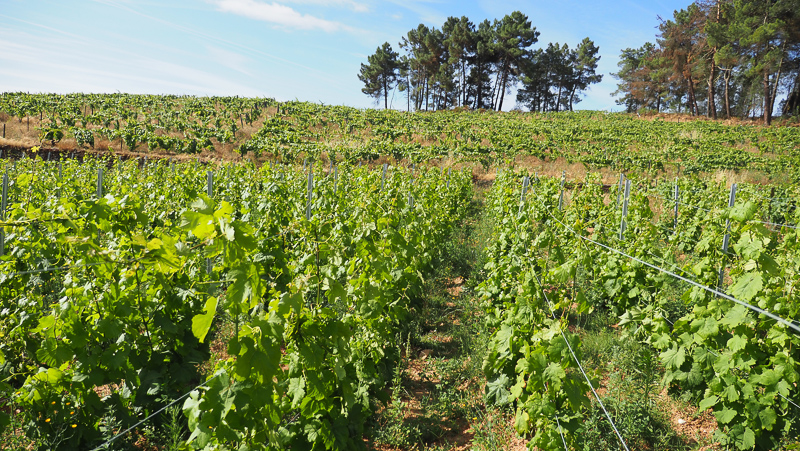
Before the co-ops, people would make wine or Port and then sell it to the larger companies, if they made more wine than they needed. This is primarily a white area, so it wasn’t really about Port. Tiago’s grandfather used to sell quite a bit of white wine to Bairrada for sparkling production. ‘The alcohol was low enough here, so he’d sell it to Caves Aliança,’ says Tiago.
‘I haven’t purchased any new vines so everything was in the family,’ says Tiago. He has 20 hectares of vines, all within a 5 km radius in 8 different plots. The first one we visited was a 3 hectare plot with some very old vines, planted around 90 years ago. But it’s fairly advanced for a vineyard of that time in that some of the vines were planted by variety in separate blocks. Most of the vines are white varieties, but the lower part has more red vines. It’s picked in two tranches – white then red – to make a pair of old vines wines. The family wanted to replant because there were some missing vines and yields were low, but Tiago persuaded them to keep it, and instead replant vineyards planted in the 1950s with higher-yielding clones.
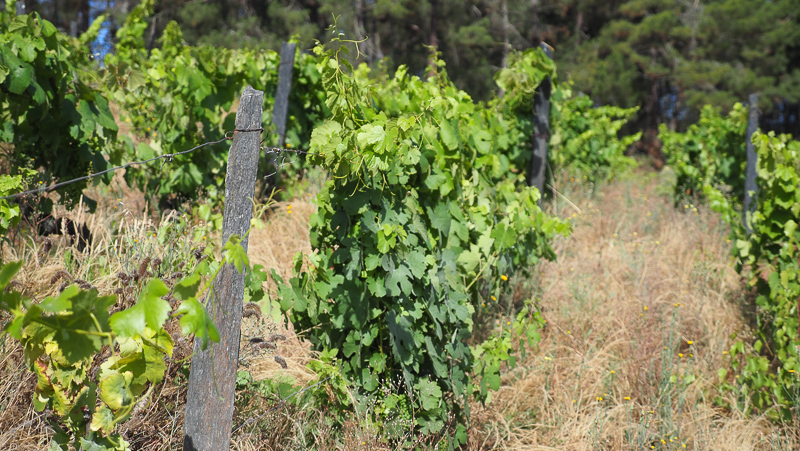

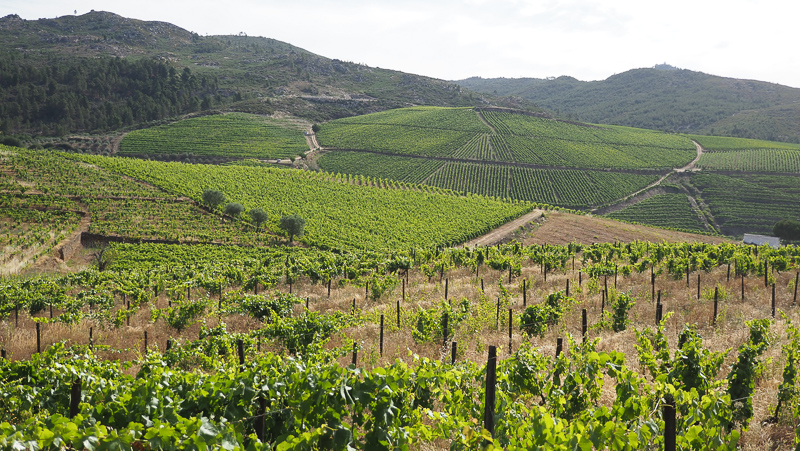
One of the reasons for missing vines is because of a fungus from the roots of the pine trees that surround the vineyard. This has affected some of the vines, and Tiago’s remedy is to cover crop with legumes and barley. The latter produces root exudates that can stop the growth of the Armillaria fungus that causes the problems. ‘It’s like a circle of missing vines that keeps spreading,’ says Tiago.
He has been replanting sections, and the way he does it is interesting. First he plants rootstock, and the one he has chosen is Rupestris du Lot. This was popular way back, partly because its roots could penetrate the bedrock well, but fell out of favour because the yields of the scion variety were restricted. But Tiago thinks this might partly explain why the old vines with this rootstock have lasted so well, because they weren’t over-cropped. ‘I love the acidity it imposes,’ he says. He plants rootstock and then grafts in either one or two years later.
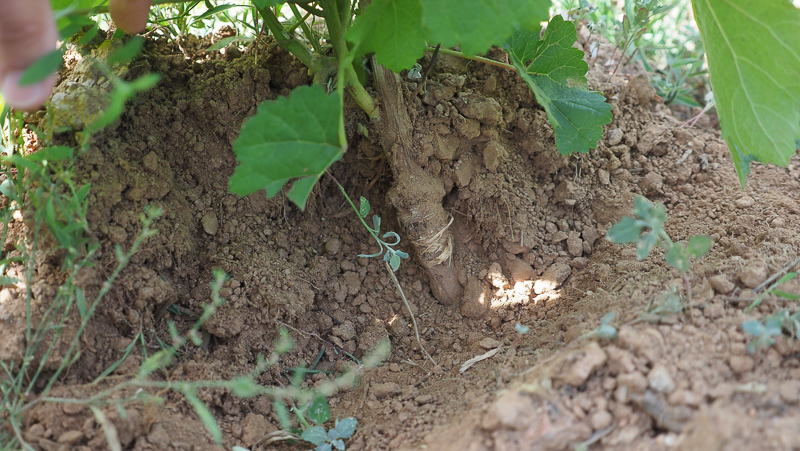
One thing he has been doing is spraying kaolin on the vines, which is a white clay that protects against the sun, and also has the side-benefit of protecting against the grape berry moth.

In terms of disease resistance, he says that low vigour is a sort of disease management. And he’s also been using a yeast-derived produce called Romeo (see https://agrauxine.com/en/produit/romeo/). The yeast is a fungus, and proteins from the cell walls of yeasts act as elicitors which prime the defence of the vines. After applying this last year he says that a few spots of downy mildew came up but then the disease didn’t progress: these spots initiated disease but then weren’t active. The elicitor does a number of things, including increasing the thickness of the leaves and skins, so this improves resistance to insects and also heat.
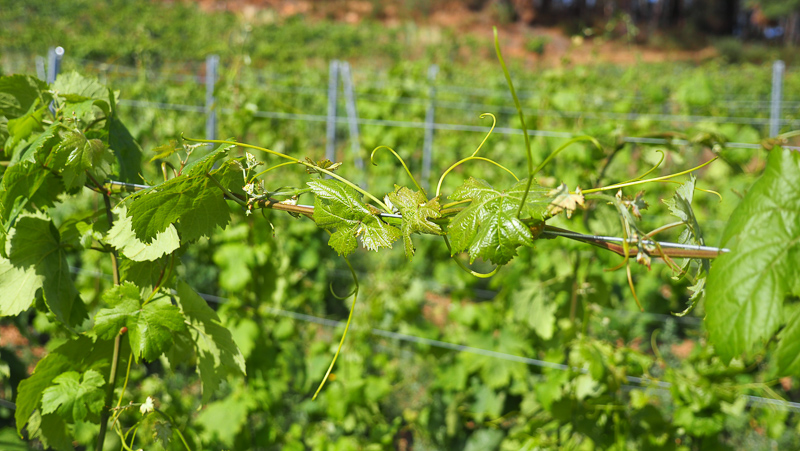
His first Uivo wines were made in 2007. He takes and experimental approach, looking for wines with freshness and low extraction. And although all of these wines are from the Douro, they aren’t labelled as such, but rather as table wines. Three years ago, Tiago decided to break free from the IVDP after a lot of failures (the wines have to be sent for a tasting assessment to get the DOP). The first wine to be outside the DOC was the Renegado.
Most of the wines are made with very low levels of sulfites – for the whites it is around 20 ppm total. These count as natural wines by any sensible definition. Tiago purchased the cooperative in Sanfins a few years back and uses just part of it at the moment. This is home to other winemaking projects, and his plan is to move his own operation into the larger part of the winery that still needs renovation, leaving the current winery for the other residents.



The first year he did Pet Nat was 2014. Now it is maybe 40% of production. Did he make any mistakes? ‘Oh yes, many,’ says Tiago. ‘At the time I was doing a still rosé from Pinot Noir and a white from Moscatel. The first year I bottled straight from tank and using a manual capper. This was the problem: a lot of the bottles were leaking. Interestingly, in 2014 there were no tartrates. In 2015 I was trying to do it better and I used a mechanical capper. We did everything well. The problem was that we got to November and the temperature dropped a lot, and we had a huge plaque of tartrates. The bottles were laying down so the wine was very fizzy. I had to bang bottles against a car tire just to break the tartrates so we could remove them, otherwise the wine was explosive. The consumer shouldn’t have to lose half the bottle when they open it!’
Of the current wines, for the skin contact and the palhete Pet Nats he doesn’t need to disgorge. But for others he has tartrates and needs to. He looks at density as fermentation progresses and also sends wine to local labs to analyse the sugar. ‘We bottle when we feel it is right,’ says Tiago. He slows the fermentation a little bit by cooling, but not to an extreme. They rack the wine three or four times during fermentation, which helps, but it would be impossible to filter the fermenting wine before bottling.
Tiago is asked for advice a lot, because he and Aphros were the first to start making Pet Nat, more-or-less at the same time. ‘Every harvest I get phone calls from people saying what should I do? But there’s no unique recipe: you need to adapt every year.’
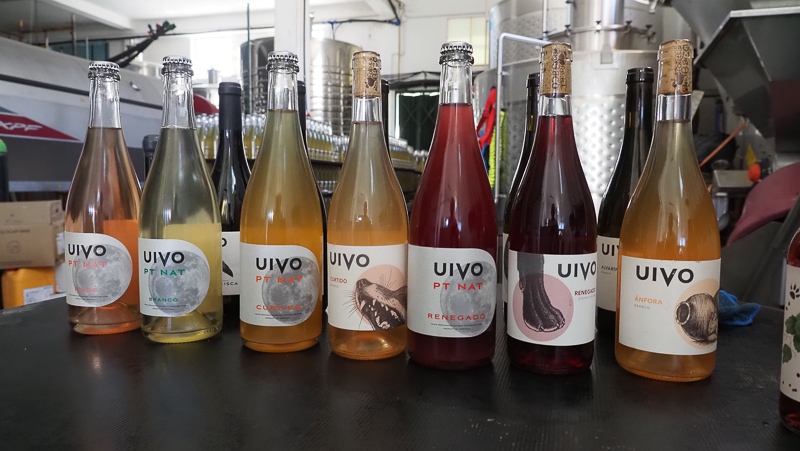
THE WINES
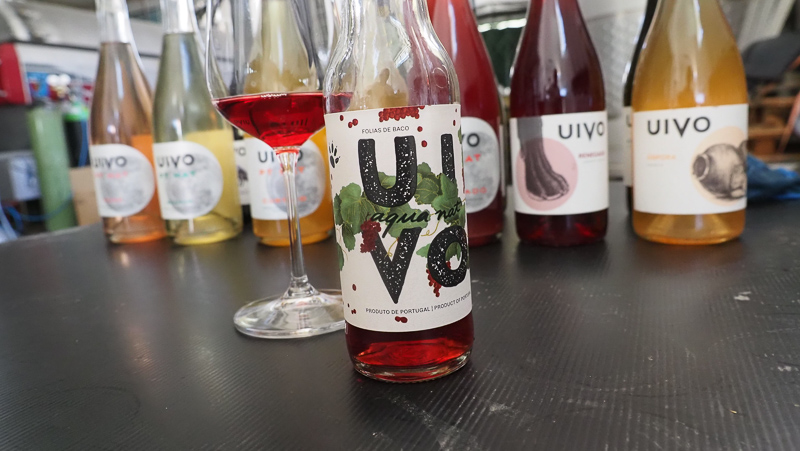
Uivo (Aromatised Wine Based Drink) Acqua Nat
5.5% alcohol. A piquette (but they can’t use this term). They do a lot of pet nat so the skins have a lot of juice, so they macerate these skins with water from the vineyard (which has a pH of 5.5). Juicy, bright and fruity, with a slight tartness. Very easy and pure with lovely red fruits, and massive drinkability. Joyful. A half bottle sells here for €1.50.
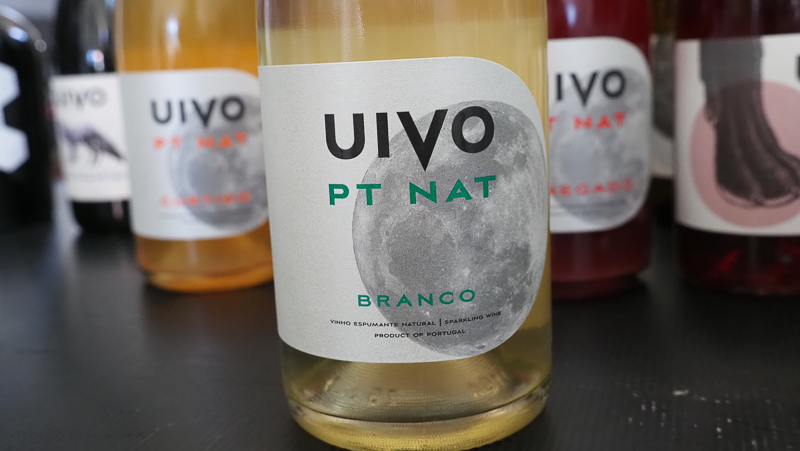
Uivo Pet Nat Branco 2021 Portugal
Mostly six varieties from the newer vineyard (2001-2102). Arinto, Rabigato, Avesso, Gouveio, Bical, Moscatel, Alvarinho. Disgorged. This is pure, bright, dry and very fruity with a bit of grip: some mandarin, orange peel, lemons and dry herbs. Bottled at end of October at the end of primary fermentation, then keep upside down and remove the sediment. Only sulfite addition is 15 mg/l at disgorgement to counter any oxygen entering then. Low pH of 3.0 or thereabouts. Lovely precision and purity here. 91/100
Uvio Pet Nat Rosé 2021 Portugal
This is Pinot Noir. Pale pink in colour it has nice brightness with cherry and citrus fruit. Pure and fruit-driven. Dry with nice delicacy and some nice crispness. There’s good texture here and a hint of herbiness on the finish. Shows some delicacy. 92/100
Uivo Pet Nat Curtido 2021 Portugal
100% Moscatel, undisgorged. Usually around 7 days skin contact. Golden colour. Appealing grapey, terpenic nose with some herbs and nice floral notes. The palate is fresh and detailed with lovely texture and a bit of grip, showing melon, pear and table grape fruit with a slight saltiness. It’s so good: gastronomic, with some tannins and acidity in concert with the bubbles. 93/100
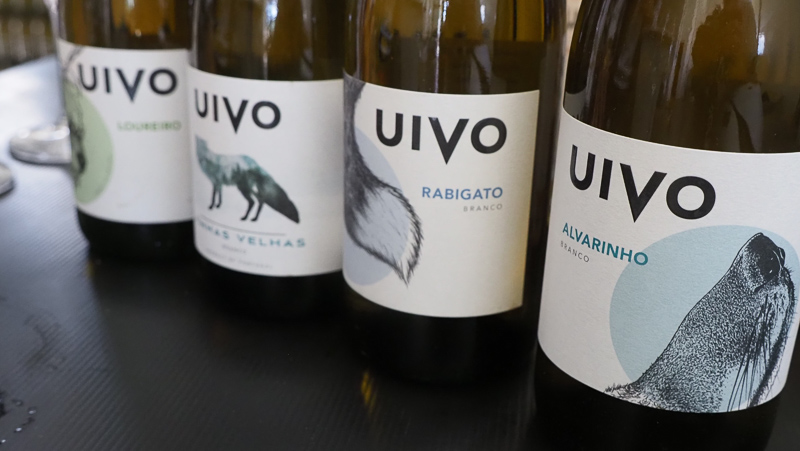
Uivo Alvarinho 2021 Portugal
11.5% alcohol. Planted in 2008 on granite soils. Direct pressing and bottled early in February. Very low sulfites. This is bright and focused with lovely citrus and pear fruit, as well as some apricot on the finish, which has keen acidity and a lightness to it. It’s fruity but also stony and mineral. Lovely freshness here. 92/100
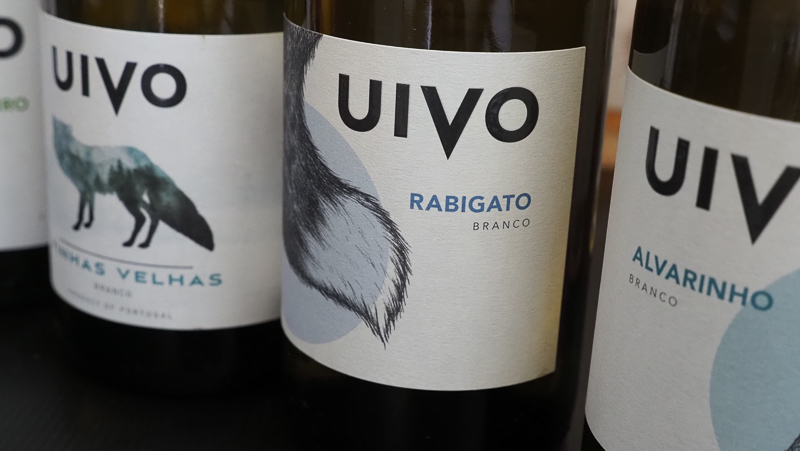
Uivo Rabigato 2021 Portugal
This is a variety Tiago thinks has a lot of potential for the Douro: it normally finds its way into blends. This is so bright, light, pure and focused with lots of lemony acidity, and a fresh mineral drive. Vital, pure and a bit saline with incredible focus, and really high acidity. Such precision here. 92/100
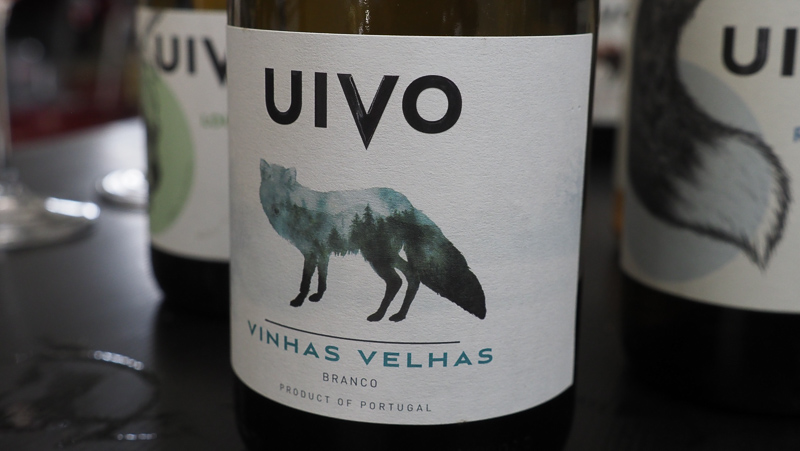
Uivo Vinhas Velhas 2020 Portugal
This was the first vineyard we saw, a very old one of 90 years. A little bit of skin contact. Fermentation started in stainless steel then goes into 2500 litre chestnut vat and smaller old barrels. Compact, complex, layered and quite saline with some crystalline citrus fruit and notes of apricot and grapefruit, finishing with good acidity and a little bit of structure. Very expressive with a lovely grainy, mineral, saline finish. 94/100 (a steal at €12)
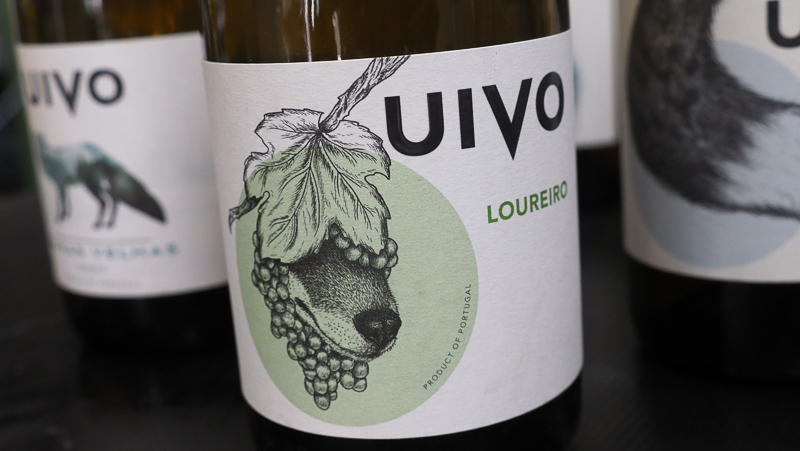
Uivo Loureiro 2019 Portugal
This is from Aphros grapes from Vinho Verde (Ponte Lima). Foot trodden in lagar (whole bunch) with 4 days of skin contact. Mostly stainless steel, with some cement egg. Yellow/gold colour. Powerful and expressive with lovely citrus and apple aromatics, some pear fruit, and a lovely spicy, structured framing on the palate. This is really good with intense fruit, lovely texture and good acidity. A remarkable wine with nice weight and depth. 94/100
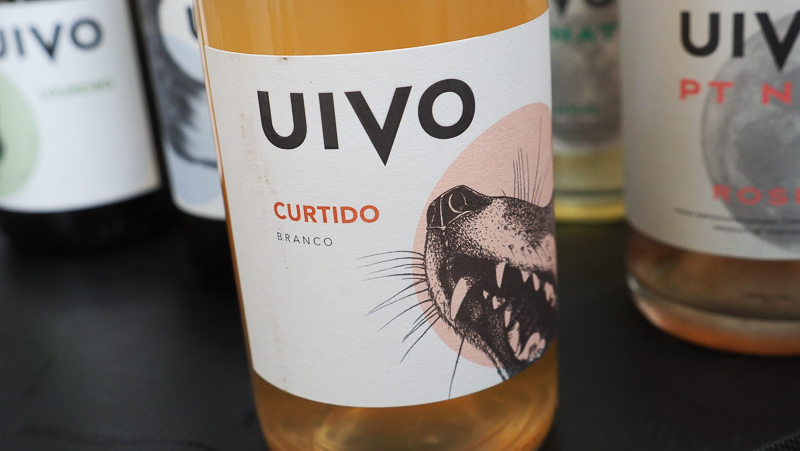
Uivo Curtido 2021 Portugal
This is skin fermented Moscatel (4 months in cement tanks), and it’s the biggest production. There’s some Moscatel Roxo here, too. This was a fresher year so all destemmed. Lovely fruit here: bright, exotic table grape with a hint of mint, and really good structure from both lemony acidity and also some tannins. Has this really nice vivid feel in the mouth. Juicy finish. So expressive. 93/100
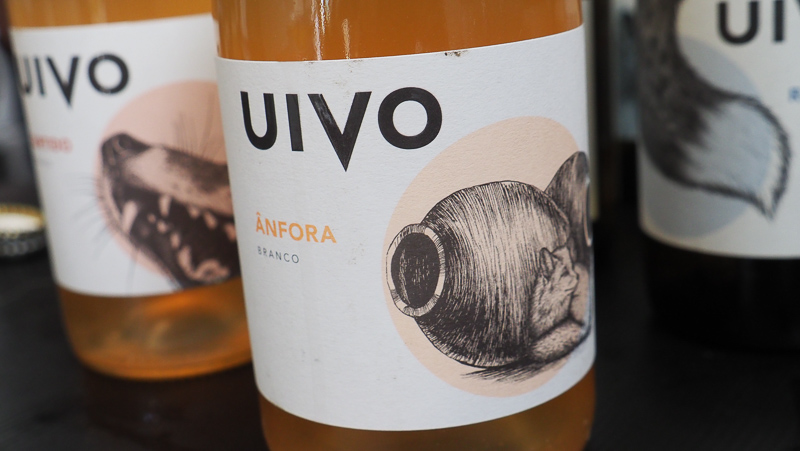
Uivo Ânfora 2020 Portugal
Samarrinho and Donzelinho, and 11 months in Talhas from the Alentejo. These are two contrasting varieties. Beautiful aromatics here: very floral and exotic with powerful lemony notes, and great acidity. The palate is concentrated and structured with lovely lemony fruit and a bit of pithy grip. Stony and mineral on the finish, with potential for development. 94/100
Uivo Chronológico Branco NV Portugal
This is a blend of wines encompassing the 2008-2018 vintages, made with different techniques, some with flor. The 2008 was made with old barrels and had too much alcohol, while the 2018 is skin contact. Full yellow colour. Powerful, intense and milti-layered with lots of complexity. There’s a salty edge to the pear, peach and lime fruit with some crystalline citrus notes, some tangy apples. Mineral, intense and distinctive. 95/100
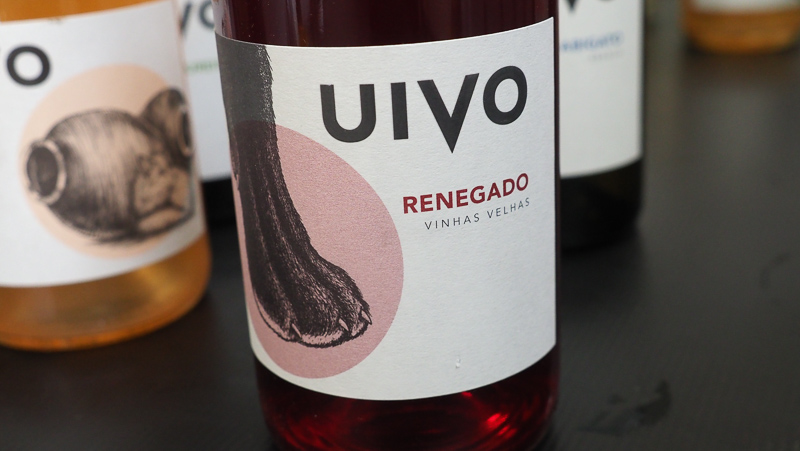
Uivo Renegado Vinhas Velhas 2021 Portugal
The idea was to recreate the traditional style of wine people made to drink at home: mixed red and whites, into lagar, 3 or 4 days skin contact, then pressed. The first non-DOC in the range. Red/pink in colour. Wonderful floral red cherry nose with some almond notes. The palate has a little bit of cherry with nice plum notes and a touch of cranberry, with good acidity and lovely fruity flavours. Has a bit of tannin: easy drinking, but with some personality. 92/100
Uivo Lameiras 2021 (tank sample)
Lovely freshness and intensity here with juicy, supple, fleshy, green-tinged raspberry and cherry fruit with a bit of grip. Lovely acidity (pH 3.3). There’s a touch of red apple. It’s so fresh and has lovely vivid fruit with just a bit of tannic grip. Lovely stuff. 93/100
Uivo Renegado PT Nat 2021 Portugal
Fruity and bright with nice acidity and juicy cherries and plums. This is undisgorged and is a bit cloudy but has nice pure cherry and raspberry fruit. There’s some tannic grip on the finish. Gastronomic. 91/100
Uivo Tinta Francisca 2020 Portugal
12% alcohol. This looks like Pinot Noir in the vineyard, and it spends one year in chestnut barrels. Lovely juicy aromatic red cherry fruit with fine herbal hints and good acidity. This has a lovely juicy, tart quality with nice cherry and raspberry fruit. 93/100
Uiva Vinhas Velhas Tinto 2018 Portugal
12% alcohol. Three years ageing, most in barrel, some in stainless steel. Fruity and bright with raspberry and cherry fruit, and a hint of mint. There’s nice freshness here and some grainy structure. Juicy but with some grip on the finish. 93/100
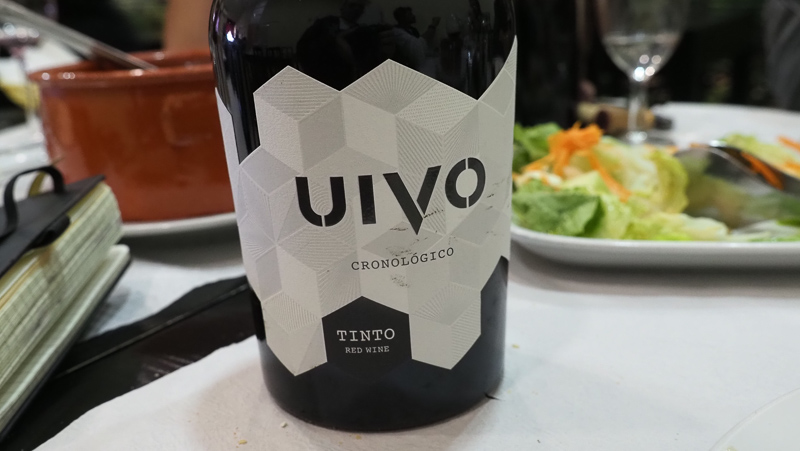
Uivo Chronológico Tinto NV Portugal
A blend of vintages, but with a majority of 2011, and bottled in 2016. This is minty and fresh with raspberry, cherries, plums and a slight creaminess to the texture. Fresh, vivid, structured blackberry fruit on the palate with some blackcurrant, and a lively minty freshness. 92/100
UK agent: Modal Wines
Find these wines with wine-searcher.com
See also: Visiting Quinta do Infantado, an important Quinta in the Douro

